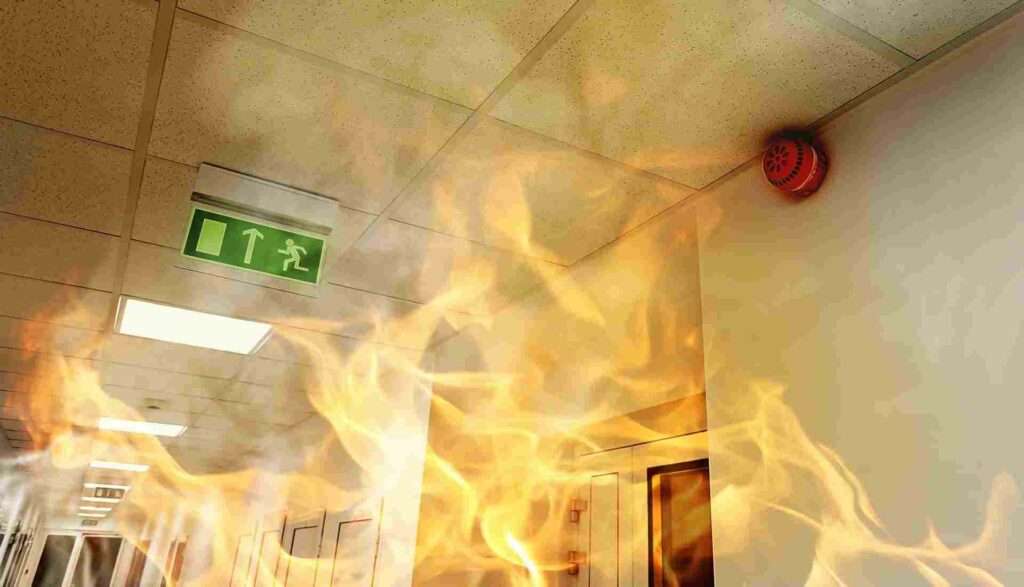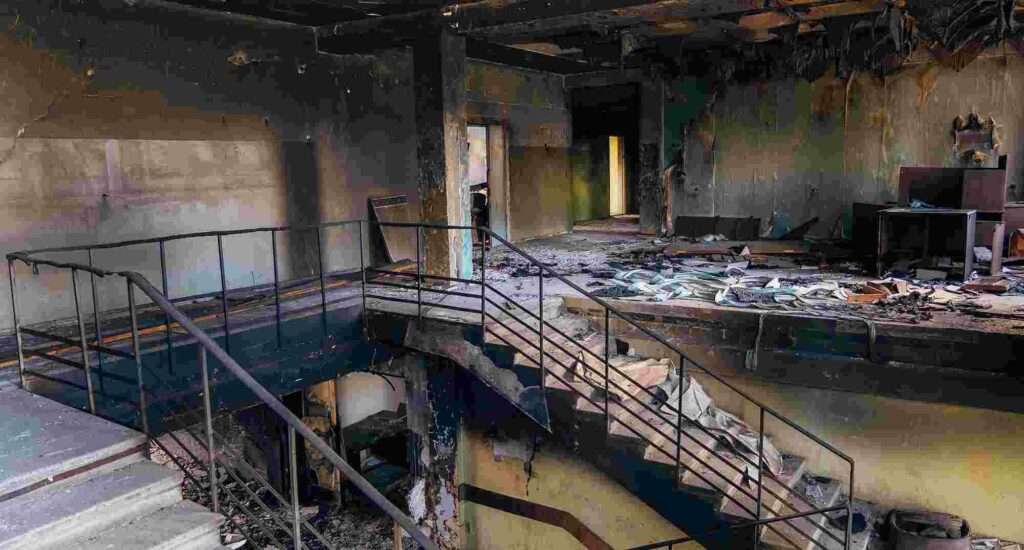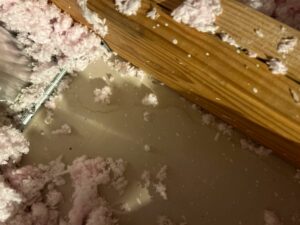Blogs
What is the difference between fire restoration and fire remediation?

Fire restoration and fire remediation are critical processes undertaken after a fire incident, each focusing on distinct aspects of recovery. Fire restoration primarily aims to return a property to its pre-fire condition, encompassing repair, cleaning, and reconstruction of damaged areas. In this comprehensive approach, Intensa Dry addresses structural repairs, smoke odor removal, and content cleaning to restore the property’s functionality and appearance. In contrast, fire remediation focuses on mitigating the damage caused by firefighting efforts, such as water and chemical residue removal, preventing secondary damage like mold growth. Both restoration and remediation are crucial in restoring a property to a safe and habitable state following a fire, ensuring thorough recovery and minimizing long-term effects.
Fire Restoration: Returning Properties to Pre-Fire Condition
Fire restoration is a comprehensive process aimed at returning a property to its pre-fire condition after it has suffered damage from a fire incident. This meticulous and detailed process involves several key steps, each essential in mitigating the damage and ensuring the property is safe and habitable once again.
Assessment and Inspection
The first critical step in fire restoration is the assessment and inspection of the property. This initial evaluation helps restoration professionals determine the extent of the damage caused by the fire and identify areas that require immediate attention. During this phase, the restoration team evaluates structural damage, assesses the degree of smoke and soot residue, and determines the level of water damage from firefighting efforts.
Board-Up and Roof-Tarp Services
Once the assessment is complete, the restoration team may provide board-up and roof-tarp services. These fire restoration services are essential to secure the property and prevent further damage from weather exposure or unauthorized entry. Board-up services involve covering broken windows, doors, and other openings with plywood or other materials. Roof-tarp services entail placing tarps over damaged areas of the roof to prevent water intrusion.
Water Removal and Drying

Firefighting efforts often leave behind significant water damage. Water removal and drying are crucial steps in preventing further damage and mold growth. Restoration professionals use specialized equipment such as pumps, vacuums, and dehumidifiers to extract water from the property and thoroughly dry affected areas.
Smoke and Soot Removal
Smoke and soot can cause extensive damage and create health hazards if not properly addressed. The restoration process includes thorough cleaning of all surfaces affected by smoke and soot residues. Restoration professionals use specialized techniques and cleaning products to remove residues from walls, ceilings, floors, and other surfaces. This step also involves deodorization to eliminate smoke odors and restore indoor air quality.
Cleaning and Sanitizing
Cleaning and sanitizing all affected areas is a critical part of the fire restoration process. Restoration professionals clean and sanitize furniture, fixtures, and personal belongings to remove residues and contaminants left behind by the fire. This step ensures that the property is safe and habitable for its occupants.
Repairs and Reconstruction
After the property has been cleaned and sanitized, the restoration team begins the process of repairs and reconstruction. This phase involves repairing or replacing damaged structural elements such as walls, floors, ceilings, and roofs. Restoration professionals may also repair or replace damaged electrical, plumbing, and HVAC systems as part of the restoration process.
Final Inspection and Testing
Once repairs and reconstruction are complete, a final inspection and testing are conducted to ensure that the property meets safety and building code requirements. Restoration professionals thoroughly inspect all restored areas to verify that the restoration work meets industry standards and that the property is safe for occupancy.
Summary
Fire restoration is a complex and multi-faceted process that requires specialized knowledge, skills, and equipment. In conclusion, fire restoration is not just about repairing the physical damage caused by fire; it is also about restoring peace of mind to property owners and occupants. By working with experienced and qualified restoration professionals, property owners can ensure that their homes and businesses are restored quickly and effectively following a fire incident.
Fire Remediation: Addressing Immediate Hazards and Health Risks
Fire remediation is a critical process focused on mitigating immediate hazards and health risks posed by fire damage. This specialized process precedes full fire restoration efforts and involves several key steps aimed at ensuring safety and reducing further damage.

Hazard Assessment
The first step in fire remediation is conducting a thorough hazard assessment. This assessment helps restoration professionals identify and evaluate potential health risks and safety hazards present in the property following a fire incident. Hazards may include structural damage, toxic residues, compromised building materials, and unsafe conditions caused by the fire.
Smoke and Soot Cleanup
Smoke and soot residues can cause significant damage and pose health risks if not promptly addressed. Fire remediation professionals use specialized equipment and techniques to clean and remove smoke and soot residues from surfaces throughout the property. This process helps prevent further damage and reduces the risk of respiratory issues for occupants.
Deodorization
Smoke odors can persist long after a fire is extinguished, affecting indoor air quality and causing discomfort to occupants. Deodorization is a critical step in fire remediation, as it involves the use of specialized techniques and equipment to neutralize smoke odors and restore a fresh indoor environment. Effective deodorization methods ensure that the property is safe and comfortable for its occupants.
Air Quality Management
Improving indoor air quality is a key objective of fire remediation. Restoration professionals use air scrubbers, ozone generators, and other advanced equipment to filter out airborne contaminants and improve air circulation within the property. This helps remove residual smoke particles and other pollutants that may be present following a fire incident.
Health and Safety Measures
Ensuring the health and safety of occupants and restoration workers is paramount during fire remediation. Restoration professionals implement appropriate safety protocols and measures to protect against potential hazards such as electrical issues, structural instability, and exposure to toxic substances. This includes using personal protective equipment (PPE) and following industry best practices to minimize risks.
Summary
Fire remediation is a crucial initial step in the fire damage restoration process, focusing on addressing immediate hazards and health risks following a fire incident. In conclusion, fire remediation lays the foundation for effective and efficient fire damage restoration by mitigating immediate risks and ensuring the safety and well-being of property occupants. By working with experienced and qualified fire remediation professionals, property owners can ensure that their homes and businesses are restored safely and effectively following a fire incident.
Conclusion:
In conclusion, while fire restoration focuses on repairing and rebuilding a property to its pre-fire state, fire remediation is essential for addressing the immediate aftermath of a fire, including water and chemical residue removal. Both processes are vital in ensuring the safety, functionality, and aesthetic appeal of a property post-fire, ultimately facilitating a comprehensive recovery and minimizing long-term damage. By combining these efforts, property owners can effectively restore their spaces and resume normalcy after experiencing the devastating effects of a fire.

